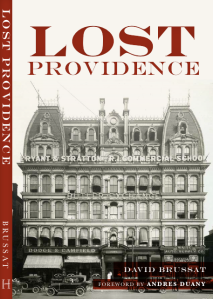Here’s a comment that just came in to the TradArch list by Andrès Duany. He helped found and has been the most active leader of the New Urbanism movement. Today, after winning the Driehaus Award of 2009, he is writing a treatise on classical architecture in which he seeks to “capture territory” for classicism from modernism. It has not been published yet, but from his comments on TradArch it is often reasonable to fear he will go too far, relabeling as classicist many forms that actually are modernist, and (if anyone pays attention) helping to dilute the crisp distinction the public recognizes between traditional and modern architecture. In a world where modernism dominates the architectural establishment, that distinction is the chief strategic asset of the classical revival.
Below, Andrès hits the nail on the head in regard to that distinction, but then seems to suggest that it really doesn’t matter and that you can like modern architecture if you understand it. Fine. But does that mean that continuing to build it helps humanize the world? Obviously not, and yet what is one to conclude from the last line in Andrès’s comment?
The one distinction is that traditional architecture expresses human habitation. Modernism does not. Those vertically proportioned windows and doors; those balconies and cupolas; those gardens and gates; those rooms – they are all dedicated to human habitation.
Modernist architecture is equally able to express – but it is interested in expressing other things: circulation, cladding, function, how it is built, the ideas of the architect, an artistic idea, the relationship to society etc. It is rarely if ever interested in expressing human habitation, that which is intrinsic to the human condition. Therefore modern architecture can only be understood by those with advanced, specialized educations in the subject. It is mute to the regular folk, hence they dislike it. I like it because I understand it. As do many others who are not idiots.
Go figure. Is Andrès suggesting that the world’s population, in its billions, be sent to architecture school so that they, like Andrès, will understand and thus accept the world’s uglification? Few would argue that those who understand and appreciate modern architecture are “idiots” – often they are of very high intelligence – but their superior comprehension hardly improves the world. For all their Mensa street cred, they lack wisdom. The above quote from Andrès unwittingly expresses that truth to perfection.




Well stated. I think Andres is being a bit of an apologist for modernism and refusing to acknowledge the obvious reality, as he himself said, there are 100 masterpieces and 100,000 buildings that have “ruined the world” or something like that.
LikeLike
I am having a hard time figuring out what Andres means. His emails to TradArch often seem to contradict each other. I hope his treatise clarifies it, and that he doesn’t go to far in embracing modernism. That said, I would not yet call him an apologist for modernism, even if he often seems to sound exactly like one.
LikeLike
I am assuming this tidbit its taken out of context in a much larger thesis.
Generalizing when comparing modern to traditional seems “idiotic” to me. Both terms encapsulate a myriad of different sub-archetypes which can be appropriate to a given context, or not! Which can be done skillfully, or not! The discussion needs to change to one of “Contextual Sustainability”, a rule-set that judges architecture with regards to the way it relates to its vernacular, its context, and uses local materials and labor. Every site has different parameters. A house in the woods, like Falling Water, has a very different responsibility to relate to context then an infill project on a historic city.
It is the role of the professionals that are educated in related fields to act as stewards of the our built and natural environment for future generations!
Peace
LikeLike